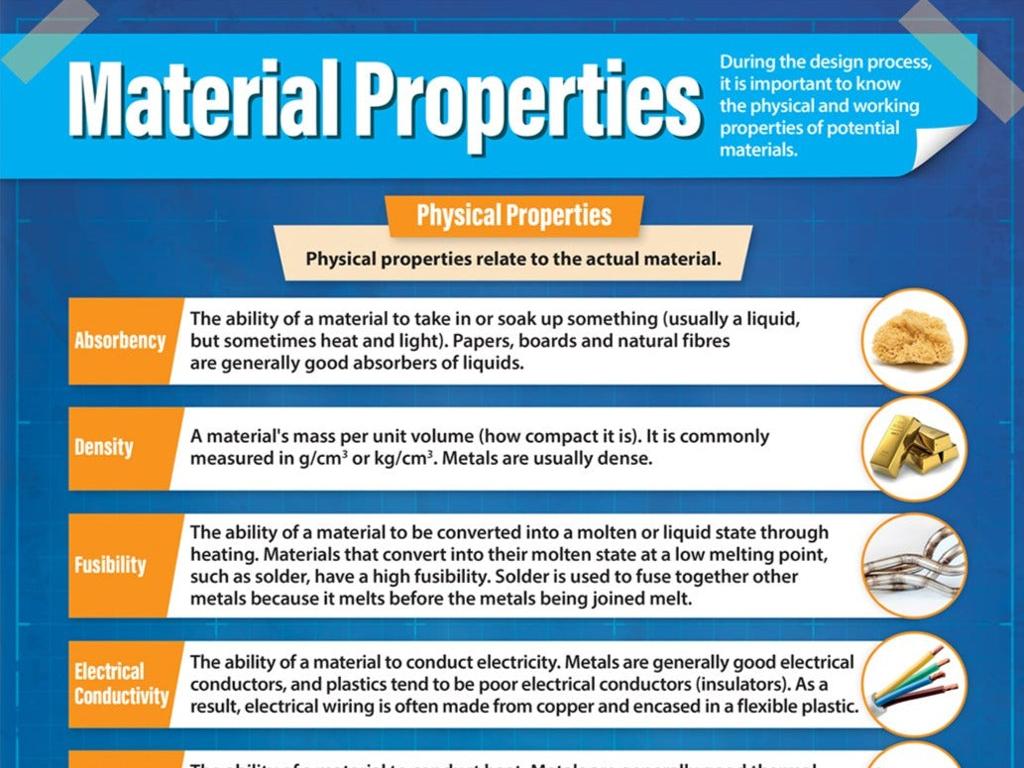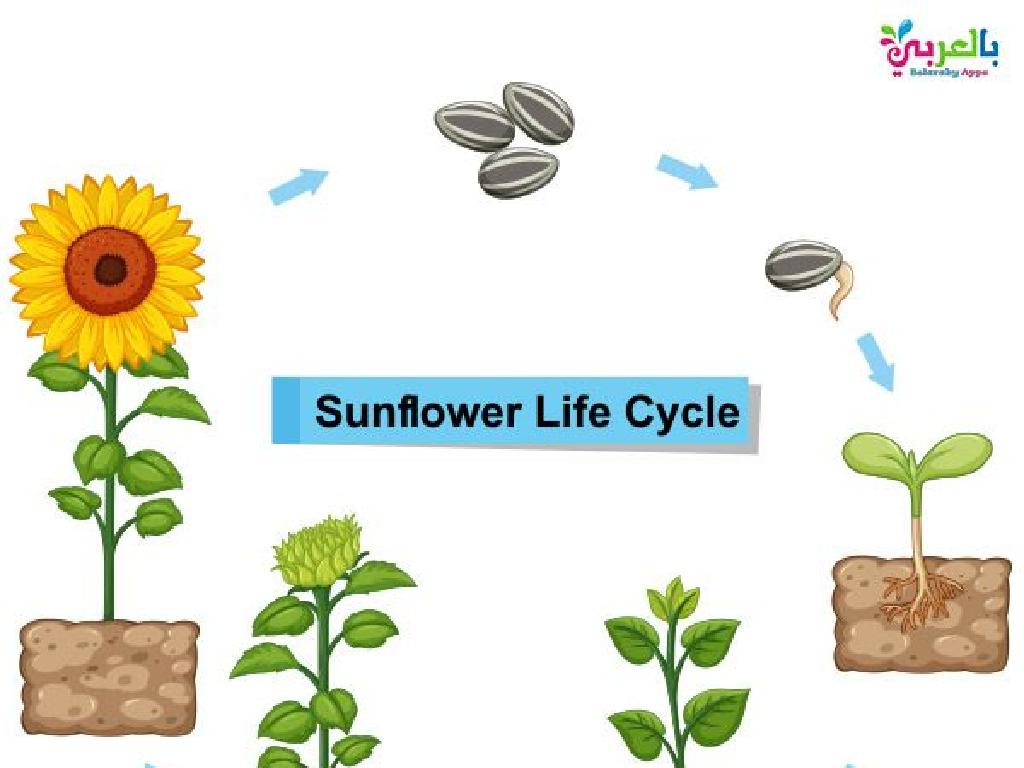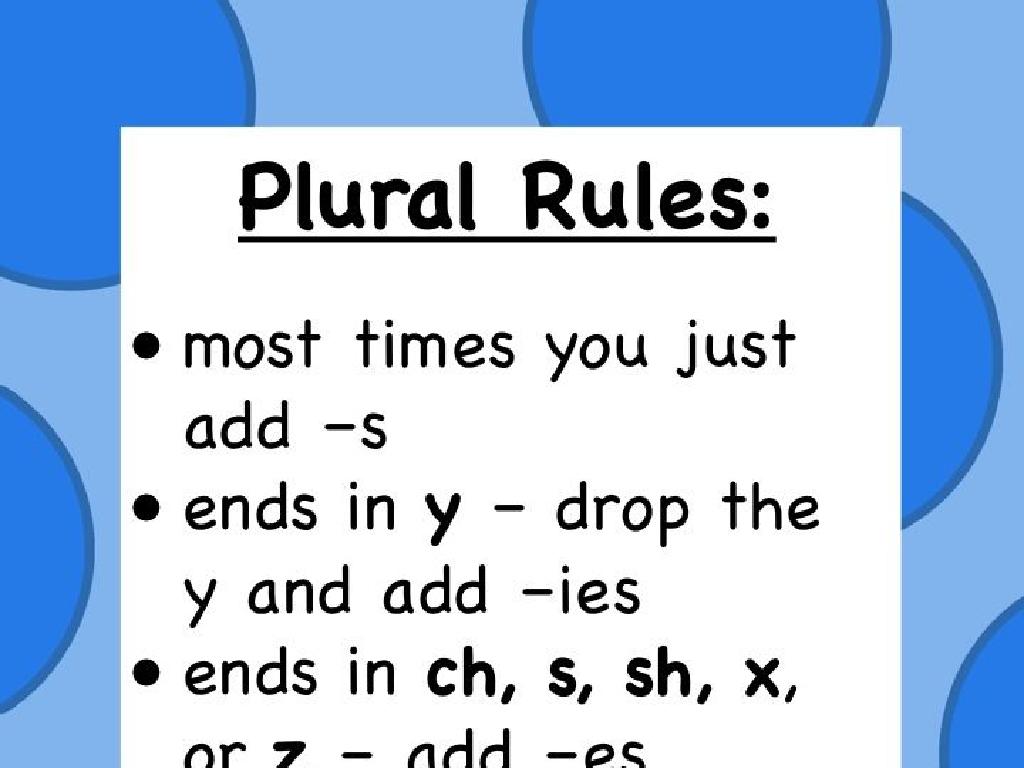Identify Independent And Dependent Variables: Word Problems
Subject: Math
Grade: Sixth grade
Topic: Two-Variable Equations
Please LOG IN to download the presentation. Access is available to registered users only.
View More Content
Understanding Variables in Two-Variable Equations
– Variables represent quantities
– Variables can change and affect outcomes
– Two-variable equations basics
– Equations with two variables relate two quantities
– Independent vs. Dependent Variables
– Independent variables are chosen, dependent variables result
– Real-world examples
– E.g., hours worked (independent) and money earned (dependent)
|
This slide introduces students to the concept of variables within the context of two-variable equations. Start by explaining that variables are symbols representing quantities that can change. Then, discuss the basics of two-variable equations, emphasizing that they include two different variables that are related to each other. Clarify the difference between independent and dependent variables, with the independent variable being the one that is chosen or controlled, and the dependent variable being the result or outcome of the independent variable. Use relatable examples such as the relationship between the number of hours worked and the amount of money earned to illustrate these concepts. Encourage students to think of other examples where one variable might depend on another. This will set the foundation for solving word problems involving two-variable equations.
Understanding Variables in Equations
– Define a variable in math
– A symbol for a number we don’t know yet
– Variables in simple equations
– For x + 2 = 6, x is the variable
– Real-life variable examples
– Distance = Speed x Time (D = S x T)
– Practice with word problems
|
This slide introduces the concept of variables, which are fundamental in understanding algebra and equations. A variable is a symbol, usually a letter, that represents a number whose value is not yet known. In simple equations, variables are used to find the missing number that makes the equation true. Real-life examples, such as calculating distance using speed and time, help students relate variables to everyday situations. Encourage students to identify variables in word problems and understand how they relate to the problem’s context. This will set the foundation for learning how to identify independent and dependent variables in more complex scenarios.
Independent vs Dependent Variables
– Define Independent Variable
An independent variable is what you change.
– Define Dependent Variable
A dependent variable is what you observe or measure.
– Contrast both variables
Independent variables are controlled by the experimenter, and dependent variables are the response to these changes.
– Examples in word problems
If x represents hours studied and y represents test scores, x is independent and y is dependent.
|
This slide introduces the concept of independent and dependent variables within the context of two-variable equations. The independent variable is the one that is changed or controlled in an experiment to test the effects on the dependent variable. The dependent variable is what is being tested and measured. It’s important to help students understand that the independent variable is the cause, while the dependent variable is the effect. Use examples from everyday life or simple experiments to illustrate the difference. For instance, in a word problem about plant growth, the amount of water given (independent variable) affects the height of the plant (dependent variable). Encourage students to identify these variables in various word problems to enhance their understanding.
Identifying Variables in Word Problems
– Read the problem carefully
– Understand the story and what is being asked.
– Find the independent variable
– The variable that stands alone and isn’t changed by the other variable.
– Determine the dependent variable
– The variable that depends on the independent variable.
– Understand variable relationships
|
This slide is aimed at helping students identify independent and dependent variables within the context of word problems. Start by reading the problem thoroughly to understand the scenario. The independent variable is the one that is changed or controlled in an experiment, while the dependent variable is what you measure in the experiment and what is affected during the experiment. For example, if we are studying the effect of study time on test scores, ‘study time’ is the independent variable, and ‘test scores’ are the dependent variable. Encourage students to ask themselves what is being changed and what is being measured or observed. Understanding the relationship between these variables is crucial for forming hypotheses and drawing conclusions in experiments and data analysis.
Exploring Variables Through Word Problems
– Example 1: Lemonade Stand Sales
– Independent: Days open; Dependent: Cups sold
– Example 2: Plant Growth Over Time
– Independent: Days measured; Dependent: Height of plant
– Interaction of Variables
– How changes in one variable affect the other
– Understanding Relationships
|
This slide aims to help students identify independent and dependent variables in real-world situations. For the lemonade stand, the number of days the stand is open is the independent variable, and the cups of lemonade sold is the dependent variable. In the plant growth example, time is the independent variable, and the plant’s growth in height is the dependent variable. Discuss with students how the independent variable can influence the dependent variable in each scenario. Encourage them to think of other examples where one variable depends on another. This understanding is crucial for grasping the concept of two-variable equations and how they are used to model real-life situations.
Practice: Identifying Variables in Word Problems
– Problem 1: Tickets and Total Cost
– How does the number of tickets relate to the total cost?
– Problem 2: Hours Studied and Test Scores
– Does studying longer improve test scores?
– Collaborative variable identification
– Understanding relationships
– Learn how one variable affects another
|
This slide is designed to engage students in practicing how to identify independent and dependent variables within the context of word problems. For Problem 1, students should determine that the number of tickets is the independent variable (what you choose) and the total cost is the dependent variable (what you find out). In Problem 2, the hours studied would be the independent variable, and the test scores would be the dependent variable. Encourage students to work together to identify these variables and understand the cause-and-effect relationship between them. This exercise will help solidify their understanding of how variables interact within two-variable equations.
Class Activity: Craft Your Word Problem
– Pair up and write a word problem
– Determine the independent variable
– The variable you change, like time spent studying
– Determine the dependent variable
– The outcome variable, like test scores
– Explain variables in your problem
– Share how you chose your variables
|
In this activity, students will apply their understanding of independent and dependent variables by creating their own word problems. Working in pairs encourages collaboration and idea sharing. Guide them to identify the independent variable (the one that is changed or controlled in the experiment) and the dependent variable (the one that is tested and measured). For example, if the word problem is about how the number of hours spent studying affects test scores, ‘hours spent studying’ is the independent variable, and ‘test scores’ is the dependent variable. After creating their problems, students should explain their reasoning behind the choice of variables. This exercise will help solidify their understanding of the relationship between variables in two-variable equations. Provide examples and be ready to assist pairs that may struggle with concept application.
Understanding Variables in Word Problems
– Pairs present their word problems
– Class identifies variables
– Discuss variable roles
– Which variable determines the other?
– Explain independence/dependence
– Independent variables are chosen, not dependent on other variables in the problem; dependent variables rely on the independent ones.
|
This slide is designed for an interactive class activity where students will work in pairs to create and present word problems to the class. The focus will be on identifying the independent and dependent variables within these problems. As each pair presents, the rest of the class will engage by pinpointing the variables involved. Following this, there will be a group discussion to deepen understanding of why certain variables are independent acting as the cause or input and why others are dependent being the effect or outcome. Teachers should facilitate this discussion, ensuring that students grasp the concept that independent variables are the ones we change or select, and the dependent variables are the results we observe from these changes. The activity will culminate in students explaining the reasoning behind their classifications, solidifying their comprehension through peer teaching.
Review: Independent vs. Dependent Variables
– Recap: Independent variables
– The variable that is changed or controlled in an experiment.
– Recap: Dependent variables
– The variable being tested or measured in an experiment.
– Variables role in equations
– They determine the relationship in equations.
– Next: Solving two-variable equations
– Learn to find values for both variables.
|
As we close today’s lesson, let’s review the key concepts. Independent variables are the ones we change or control to see how they affect other variables. Dependent variables are what we observe or measure, changing in response to the independent variables. Understanding these is crucial for setting up and solving equations, as they define the relationship between the two. In our next lesson, we’ll apply this knowledge to solve two-variable equations, which is an important skill in algebra. Make sure to review today’s material to be prepared for our next step into the world of algebra!





